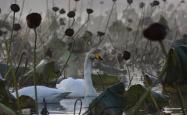园艺英文
Title: Introduction to Horticulture: A Comprehensive Guide for Gardeners
Introduction:
Are you interested in learning about the fascinating world of horticulture? Look no further! In this article, we will provide you with an overview of a comprehensive English textbook for students studying horticulture at the university level. With a focus on theory and practical applications, this textbook will equip you with the knowledge needed to succeed in the field of horticulture.
Chapter 1: Introduction to Horticulture
In this chapter, you will be introduced to the basic concepts and principles of horticulture. You will learn about the history of horticulture, its importance in modern society, and the various subdisciplines within the field. Topics such as plant anatomy, physiology, and taxonomy will be covered to provide you with a strong foundation for the rest of your studies.
Chapter 2: Plant Propagation
Plant propagation is a crucial aspect of horticulture, and this chapter will delve into the different methods used to propagate plants. From seeds to cuttings, layering to grafting, you will learn the techniques and factors that influence successful propagation. Additionally, you will explore the importance of genetic diversity and how it can be maintained through propagation.
Chapter 3: Soil Science and Fertilization
A healthy soil is the foundation for successful horticultural practices. This chapter will cover the basics of soil science, including soil composition, texture, and fertility. You will also learn about the different types of fertilizers and their application methods. Understanding soil nutrient management is essential for optimizing plant growth and productivity.
Chapter 4: Plant Nutrition and Irrigation
Plants require a balanced supply of essential nutrients for healthy growth. This chapter will discuss the role of macro and micronutrients in plant nutrition and the symptoms of nutrient deficiencies. Furthermore, you will explore various irrigation techniques and strategies to ensure proper water management in horticultural systems.
Chapter 5: Pest and Disease Management

Pests and diseases can greatly impact the health of plants, and effective management strategies are crucial for successful horticultural production. In this chapter, you will learn about common pests and diseases in horticulture and the principles of integrated pest management (IPM). This approach focuses on environmentally friendly methods to minimize pesticide use while effectively controlling pests and diseases.
Chapter 6: Horticultural Crop Production
Cultivating different horticultural crops requires specific knowledge and techniques. In this chapter, you will discover the practices involved in the production of fruits, vegetables, ornamental plants, and other crops. Topics covered include planting methods, pruning, training, harvesting, and postharvest handling.
Chapter 7: Greenhouse and Nursery Management
Greenhouses and nurseries play a significant role in horticultural production. This chapter will provide you with an understanding of greenhouse design, environmental control, and crop scheduling. Additionally, you will learn about nursery management practices, such as seedling production, transplanting, and container gardening.
Conclusion:
By studying the comprehensive English textbook "Introduction to Horticulture," you will gain a solid foundation in the principles and practices of horticulture. From plant propagation to crop production, soil management to pest control, this textbook covers a wide range of topics essential for success in the field of horticulture. So, embark on your journey into the world of horticulture and enjoy the beauty and rewards that this field has to offer.
本文 农牧产业 原创,转载保留链接!网址:https://zgnmcyw.com/post/23619.html
1.本站遵循行业规范,任何转载的稿件都会明确标注作者和来源;2.本站的原创文章,请转载时务必注明文章作者和来源,不尊重原创的行为我们将追究责任;3.作者投稿可能会经我们编辑修改或补充。








